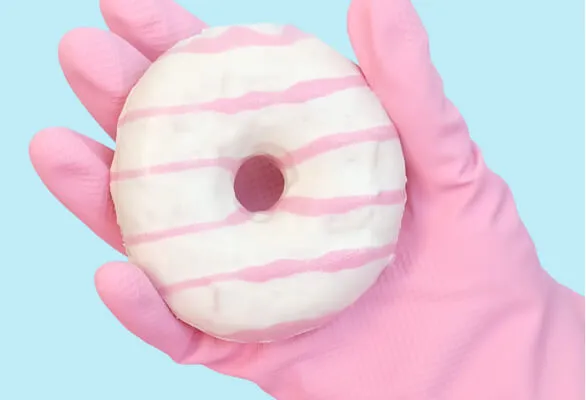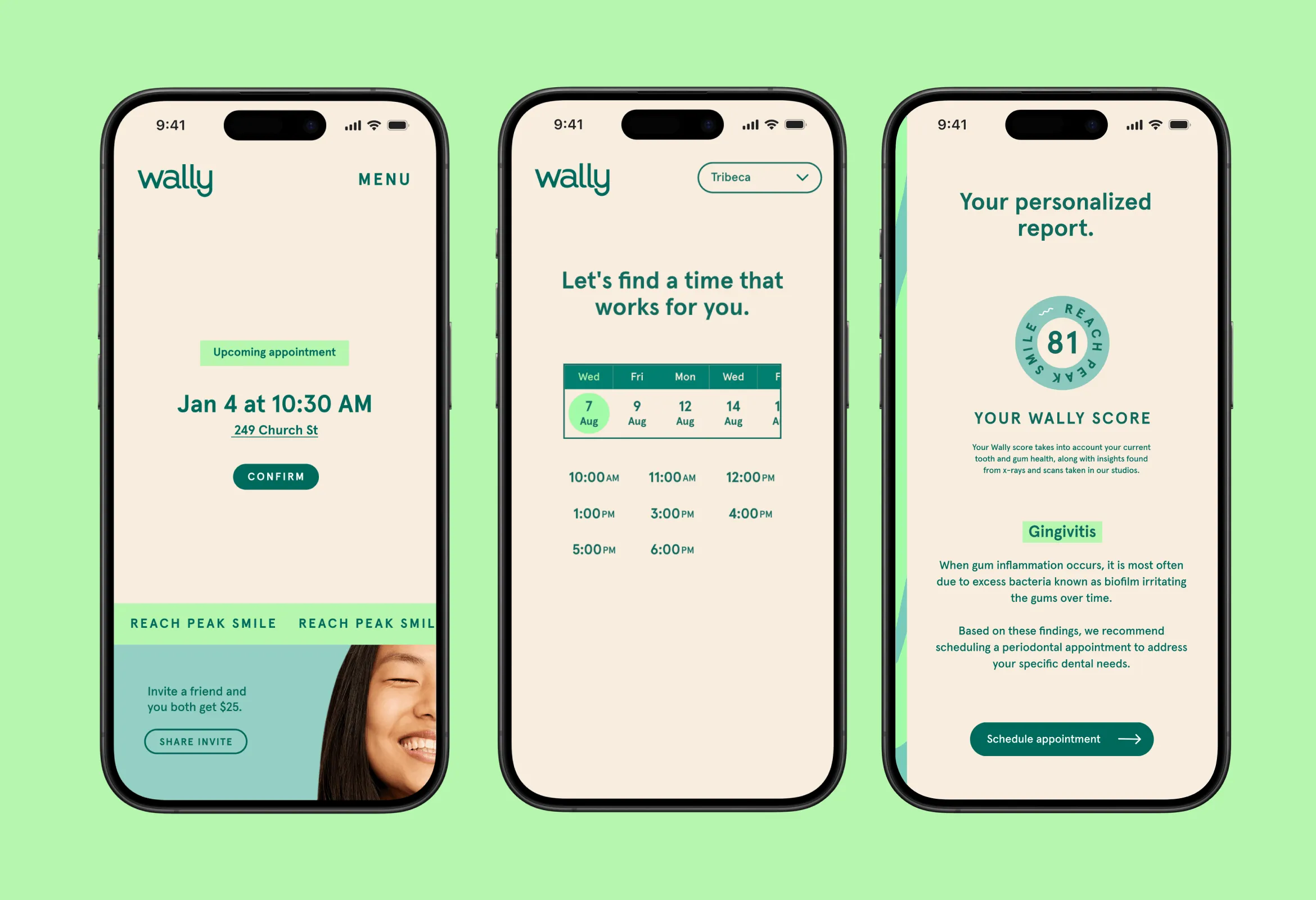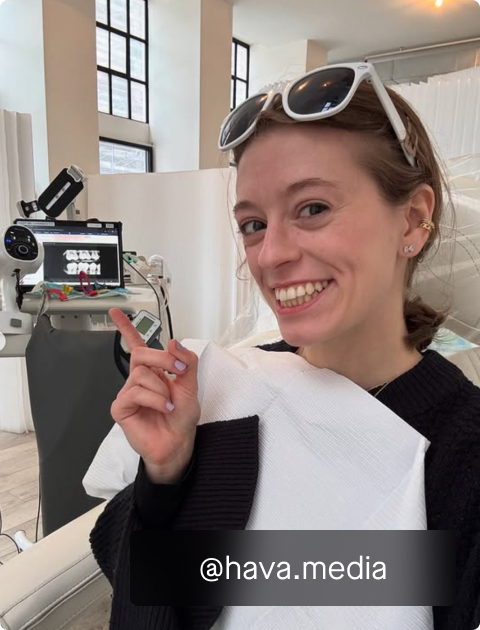Deep cleaning teeth - unpacking what you need to know

You might have heard the term "deep cleaning" at one of your dental appointments. Some dentists use this term to refer to a routine cleaning where there is scraping calculus and tartar off your teeth to make it seem like you got something "fancy" at your regular cleaning.
However, in many cases dentists are using "deep cleaning" to describe "periodontal therapy." Periodontal therapy is a non-surgical treatment to address periodontitis, aka gum disease. Periodontitis is a serious infection in your gums that causes non-reversible damage to your gum tissue and bone surrounding the tooth. Left unchecked, the infection causes irreversible damage to the surrounding gum and bone, which can lead to gum, bone, and tooth loss.
Periodontitis is a life-long disease. In the United States more than 45% of adults over the age of 30 have some form of gum disease. Similar to Type II diabetes, once you are diagnosed with periodontitis you can never be "cured." However, periodontitis can be brought under control and managed so your disease doesn't progress further and cause more harm.
If you do have active periodontitis read on to learn about the options you have to help address the infection and get you on the road to a healthier mouth.
Periodontitis treatment cost - why is it so much?
You are motivated to take control and address your periodontitis. You take the steps to call your dentist to learn more about getting treatment, you wait on the phone, and then you get the quote. The sticker price hits you like a ton of bricks and you ask yourself, "Is it normal to have to pay $1000+ for this treatment?"
If you are chatting with a traditional dentist (or waiting on hold), then yes, dropping a stack of Benjis to treat your periodontitis is the norm. And yes, it's also normal for your dentist to quote your treatment in "quadrants."
In New York City, traditional dentists charge on average $350 per quadrant for periodontal therapy. That means if you have teeth in all four quadrants of your mouth, you can get charged upwards of $1,400 to treat periodontitis. That's a bunch of C-notes!
Even if you have insurance, don't put your wallet away just yet. Most insurance plans have a co-pay for periodontal therapy, and the best plans cover up to 80%, leaving you on the hook for at LEAST 20% of the bill (if not more) in addition to your copay.
The traditional system is built on legacy decisions made by insurance companies and old-school dentists from the 1960s and 1970s. None (or hopefully none) of those people are still working today. So why blindly follow the same stale approach to oral health?
📖 Read more about why periodontal therapy is so steeply priced at the traditional dentist.
Dental deep cleaning and other ways to address periodontal disease
What exactly are the different ways to treat periodontitis / periodontal disease / gum disease? There are two categories of treatments that help halt your disease:
- Nonsurgical treatments
- Surgical treatments
Nonsurgical treatments are less invasive procedures than surgical treatments. These treatments include:
- Periodontal therapy. Scaling (check out this piece for the definition of "scaling") removes tartar and bacteria from your tooth surfaces and beneath your gums.
- Antibiotics. While topical or oral antibiotics can help control an infection, pills alone won't be enough to arrest your disease because the calculus and tartar left behind must be physically removed.
Your provider might recommend surgical treatments if nonsurgical treatment isn't enough to halt your disease. Depending on the severity of periodontitis you might be recommended:
- Gum flap surgery. The goal of flap surgery is to shrink your gum pocket so that there is less space for bacteria to hide and flourish.
- Gum grafting. The infection from periodontitis can damage your gum tissue. Unfortunately gum tissue does not grow back once it's gone.Grafting works by using gum tissue from another source and attaching it to the location where you lost gum. The tissue will fuse together with the healthy tissue to help reinforce your gums.
- Bone grafting. In some cases, your periodontitis might have permanently damaged the bone around your tooth. If the damage is extensive you might be at risk of losing your tooth - which is when reinforcing the tooth is suggested.
📖 Get more details about the different treatment options to control your periodontal disease.
Periodontal cleaning and scaling explained
If you get started with periodontal therapy (sometimes referred to as "periodontal cleaning and scaling"), here's a quick overview of what you might encounter on your journey:
- Your clinical team will complete your perio chart (map the depths of all your gum pockets), and take updated x-rays on your teeth
- Your dentist will look at your pocket depths and signs of active infection in your x-rays. Pockets of more than 4 mm and evidence of infection in your x-ray will determine if you have periodontitis.
- If you have periodontitis, your dentist will chat with you and discuss which teeth are experiencing the disease.
- If your periodontitis is mild to moderate, you'll return to the office for periodontal therapy. Your therapy session might take up to 90 minutes, and you may require two or more sessions depending on how many teeth have active periodontitis and the level of difficulty to complete the periodontal therapy.
- At the beginning of your therapy session, your hygienist will ensure you are as comfortable as possible.
- They'll use a special instrument to remove tartar, plaque, and bacteria from your tooth surface and deep beneath your gum line.
Once you complete periodontal therapy your dentist will evaluate if the infection has been arrested, bringing your mouth to a stable state.
If you've successfully halted periodontitis, that's great! However you'll need to take proactive steps to keep your periodontitis dormant and your mouth in health.
📖 Read more about periodontal therapy, scaling, and planing, and how it works.
8 mm periodontal pockets and gum health explained
Your periodontal chart is one of the key inputs into determining how your mouth is doing. It's a chart measuring how far below your gum line your gum tissue connects to your tooth.
It's conducted with a skinny probe ingrained with millimeter measurement marks. Your clinician will gently insert the probe between your tooth and gum to determine where the gum tissue is connected to your tooth. That number is then recorded in your perio chart (a fancy term for "gum chart").
Since your teeth are round, your clinician will measure your pocket depths at six points around your tooth using a perio probe to get a full view. Most adults have 28 to 32 teeth (depending on if you have your wisdom teeth), which means your clinician is measuring more than 150 points in your mouth. That's why they might sound like an auctioneer when they do your charting.
Why take so much time to measure millimeters? The measurements in your periodontal chart are invaluable inputs to determine if you have periodontitis. But it's not the only factor. Your dentist will also examine your x-rays and gum inflammation to determine if you have periodontitis, and how severe your condition is.
Reverse gum disease - what you need to know
If you have early stage gum disease, you don't yet have periodontitis. You have gingivitis. That's actually a good thing! While it sucks to have any form of gum disease, the good news is that gingivitis is actually reversible … if you catch it early. Your gingivitis will turn into more severe (and irreversible) gum disease if left untreated.
With gingivitis your gums might be red, puffy, or bleed. But sometimes gingivitis isn't painful and you may not realize you have any issues. That's why 75% of Americans develop gingivitis at least once during their life.
Reversing gingivitis is doable. It just takes conviction and the right tools. If you have gingivitis here is what you can do to reverse it and get your gums back to health:
- Get an exam from your dentist to determine the extent of your gingivitis
- Get a professional cleaning with your hygienist
- Revamp your oral hygiene routine to use the right products and techniques that your mouth needs
- Stick with your at home hygiene routine (yes, flossing daily sucks, but keep with it!)
- Schedule four or more routine cleanings per year to stay healthy
📖 Get more details on how to reverse early gum disease.









